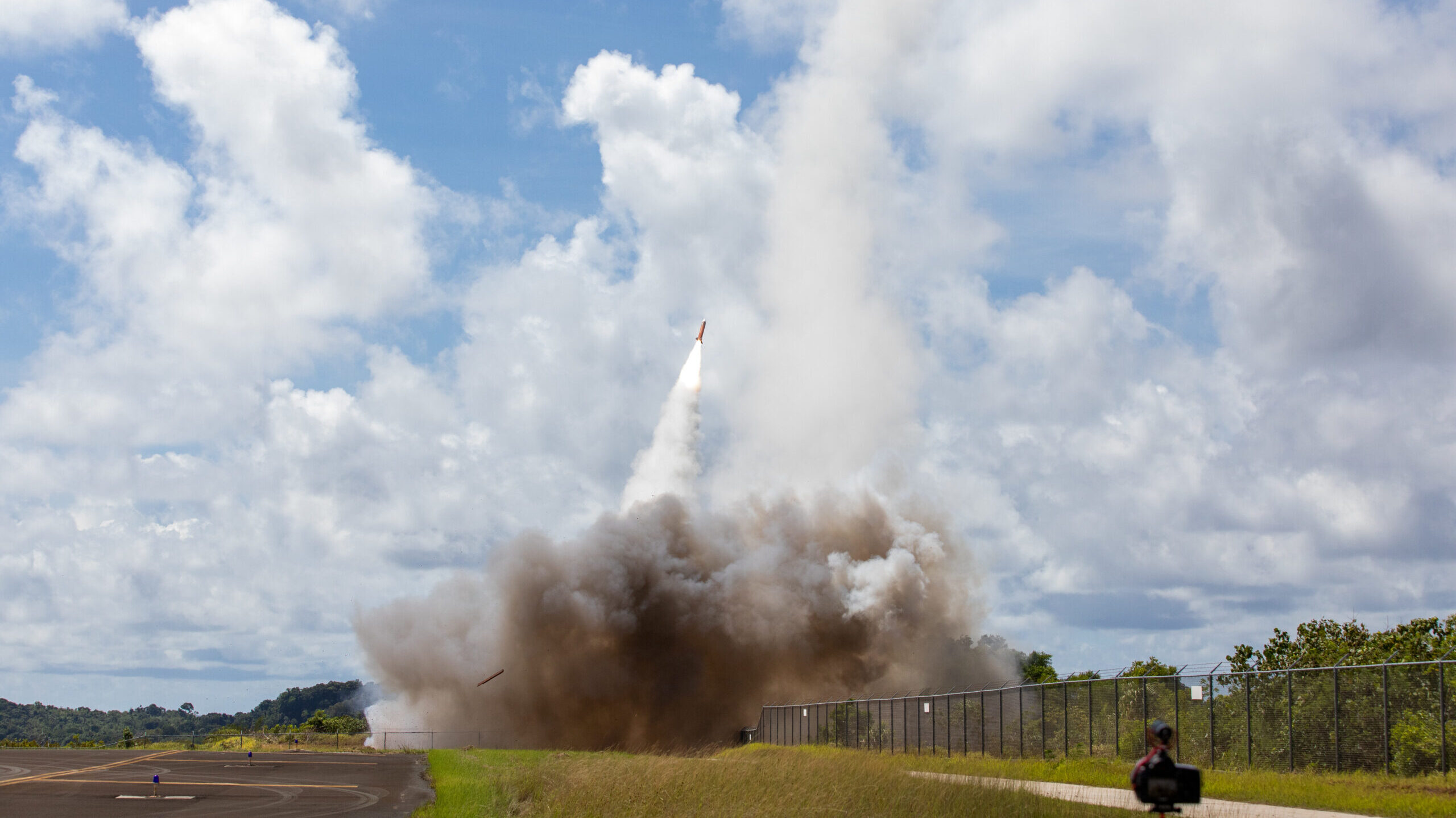
A PAC-2 Patriot interceptor missile is launched at a Kratos Defense Firejet cruise missile surrogate target during the Patriot live-fire exercise as part of Valiant Shield 22. (Maj. Nicholas Chopp/US Army)
WASHINGTON: A new report is warning that amid all the hype surrounding hypersonics, the US homeland remains vulnerable to attack by “garden-variety” cruise missiles, as evidenced by their potency in Ukraine.
“Emerging hypersonic missile threats garner significant attention, but garden-variety cruise missiles represent one of the most underappreciated, high-capacity, and near-term threats to the U.S. homeland,” states report from the Center for Strategic and International Studies published today. “As seen in Ukraine and several other recent conflicts, the employment of precision-guided cruise missiles has become commonplace.”
The report argues that America’s long-term approach that focuses homeland defense against long-range ballistic missiles has left a gap that adversaries could exploit with cruise missiles.
“It’s not just about the rogue state ballistic missiles anymore,” Tom Karako, a senior fellow and co-author of the report, told Breaking Defense in an interview. “And it is high time to adapt our air and missile defense posture, policy and programs to the near-peer and to things other than ICBMs.”
According to the report, the US has a “near-complete lack of homeland cruise missile defense,” and the systems that it does have in place are old, immobile and have well-known locations. Long-range cruise missile capabilities give adversaries a non-nuclear attack option against the United States, avoiding core aspect of US’s deterrence against a homeland attack: nuclear retaliation. The report says that the US must focus on deterrence by denial for non-nuclear attack.
Speaking at a CSIS presentation, Deputy Commander of US Northern Command Lt. Gen. A. C. Roper said today, “We absolutely believe that nuclear deterrence is the foundation of Homeland Defense. However, we also must have credible deterrence options below the nuclear threshold options which allow for a balanced approach of deterrence by denial, and deterrence by punishment, or costly imposition.”
The report points to Russian cruise missiles that would be capable of striking the US homeland depending on where they are launched. Russia’s inventory includes a new generation of air-launched cruise missiles with a range over 2,500km, potentially up to 4,500km, which would allow Russia to hit the US from the Arctic. Russia’s sea-launched cruise missile, with a range of 1,500 to 2,500 km, could find targets on the East Coast, the report states.
“Our strategic competitors, Russia, and China possess the capability and have demonstrated the intent to hold the homeland at risk, both kinetically and non-kinetically” Roper said.
But lessons in best practices for homeland defense may come from much farther away in the US Pacific territory of Guam. Leaders at US Indo-Pacific Command have advocated for billions of dollars in investment in missile defense systems there, including Aegis Ashore.
“Efforts to realize homeland cruise missile defense have already begun with the development of air and missile defense for Guam, a U.S. territory. While protection of the continental United States poses a different problem, the efforts for the defense of Guam will be especially instructive for element selection, system integration, and command and control development,” the report reads.
In the report, analysts propose a new homeland cruise missile defense architecture that would invest in new radar systems and include partnerships with civilian government agencies that monitor US airspace. The proposal involves a five-layered defense that CSIS estimates would cost $32.7 billion across 20 years, far cheaper, the report argues, than the Congressional Budget Office’s 2021 cruise missile defense architecture that produce designs that would cost between $77 billion and $466 billion. CSIS’s five layers included global threat awareness, twenty-first century distant early warning line (DEW line), wide-area surveillance, prioritized area defense and flexible mobile assets.
A critical layer of the new defense is the new DEW line, Karako said. The new DEW line would be made up of over-the-horizon radars, which “can surveil millions of square kilometers,” according to the report.
“This is probably the single most important element of the defense,” Karako said. “By having that strategic and tactical warning, and being able to track these things, that gives you early warning. It gives you flexibility gives you an ability to respond, potentially with hours of notice.”
Karako highlighted that wide-area surveillance would be a key concept to achieving the Biden administration’s “integrated deterrence” concept, using both military and civilian government tools to deter adversaries. Wide-area surveillance would require the most “imagination,” Karako said. The report included that it could include civilian air traffic radars, doppler weather radars, US Customs and Border Protection radars and passive sensing.
“This is an opportunity and a test case for the administration’s concept of integrated deterrence,” Karako said, adding “it’s about stitching in … all these kinds of things.”
Norway’s air defense priorities: Volume first, then long-range capabilities
“We need to increase spending in simple systems that we need a huge volume of that can, basically, counter very low-tech drones that could pose a threat,” Norway’s top officer told Breaking Defense, “so we don’t end up using the most sophisticated missile systems against something that is very cheap to buy.”


























